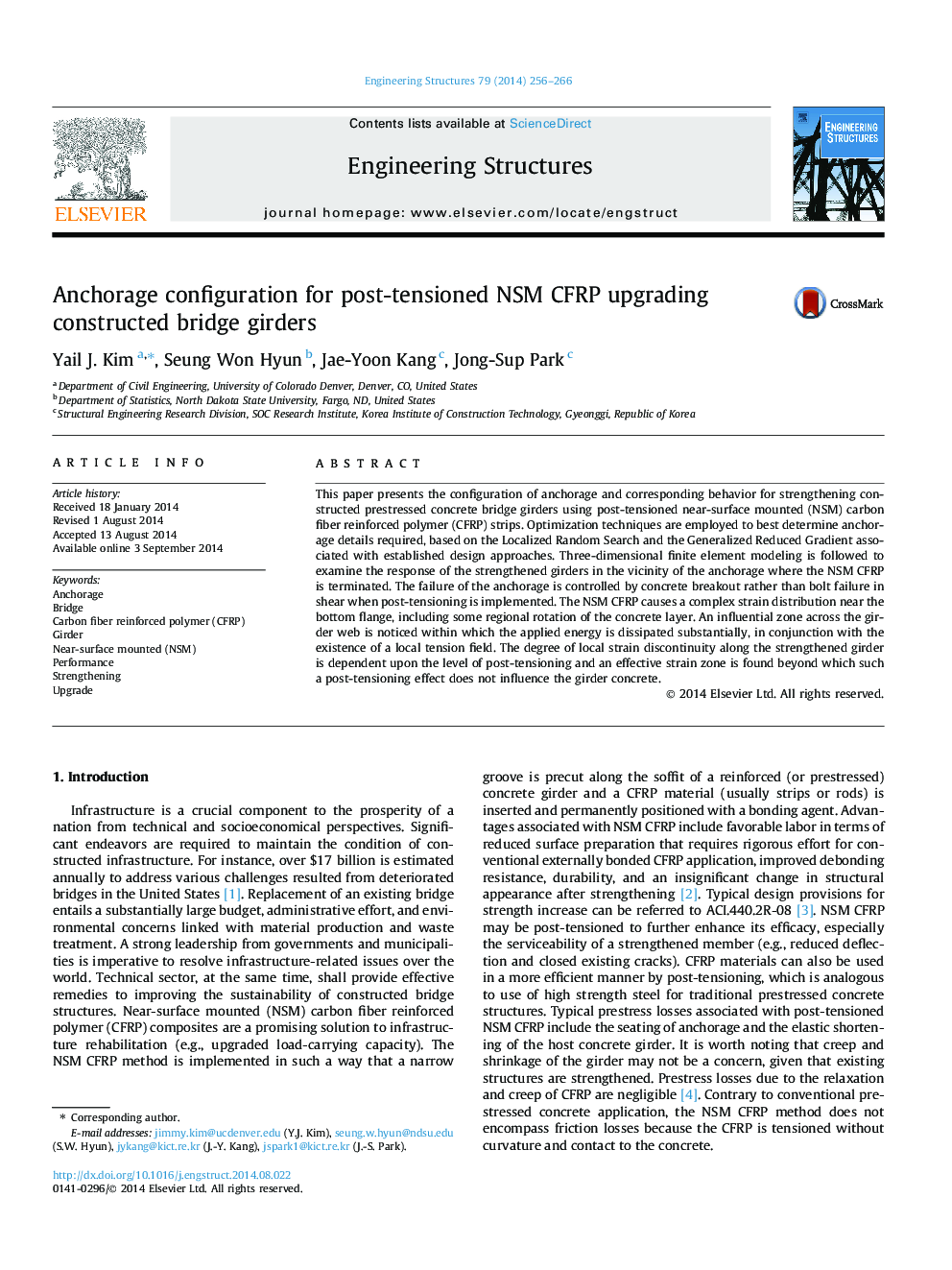| Article ID | Journal | Published Year | Pages | File Type |
|---|---|---|---|---|
| 266511 | Engineering Structures | 2014 | 11 Pages |
•The configuration of anchorage and corresponding behavior for CFRP-strengthened bridge girders are studied.•Complex strain distributions near the anchorage of post-tensioned CFRP are predicted.•The degree of local discontinuity and an effective strain zone are examined.
This paper presents the configuration of anchorage and corresponding behavior for strengthening constructed prestressed concrete bridge girders using post-tensioned near-surface mounted (NSM) carbon fiber reinforced polymer (CFRP) strips. Optimization techniques are employed to best determine anchorage details required, based on the Localized Random Search and the Generalized Reduced Gradient associated with established design approaches. Three-dimensional finite element modeling is followed to examine the response of the strengthened girders in the vicinity of the anchorage where the NSM CFRP is terminated. The failure of the anchorage is controlled by concrete breakout rather than bolt failure in shear when post-tensioning is implemented. The NSM CFRP causes a complex strain distribution near the bottom flange, including some regional rotation of the concrete layer. An influential zone across the girder web is noticed within which the applied energy is dissipated substantially, in conjunction with the existence of a local tension field. The degree of local strain discontinuity along the strengthened girder is dependent upon the level of post-tensioning and an effective strain zone is found beyond which such a post-tensioning effect does not influence the girder concrete.
